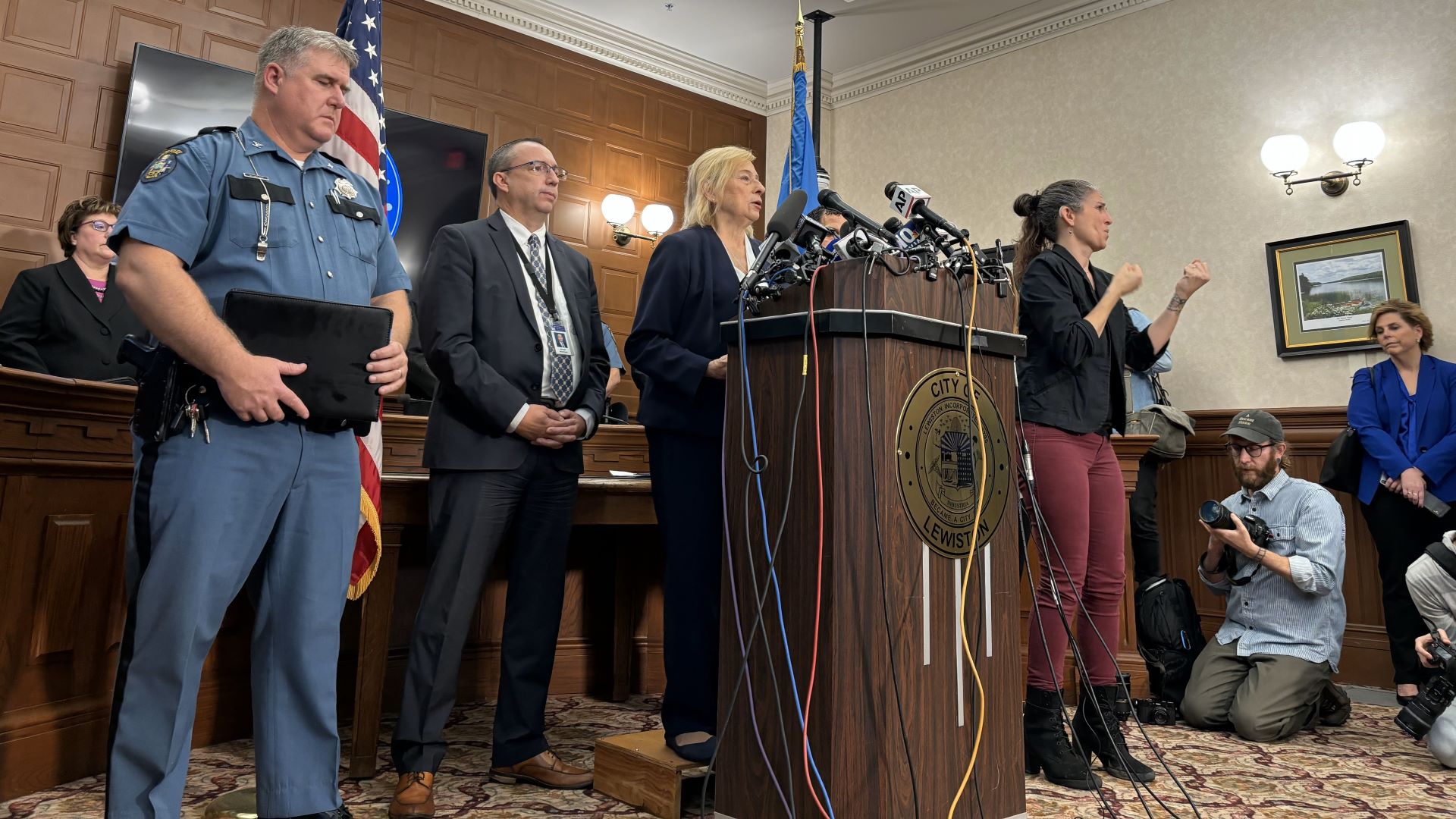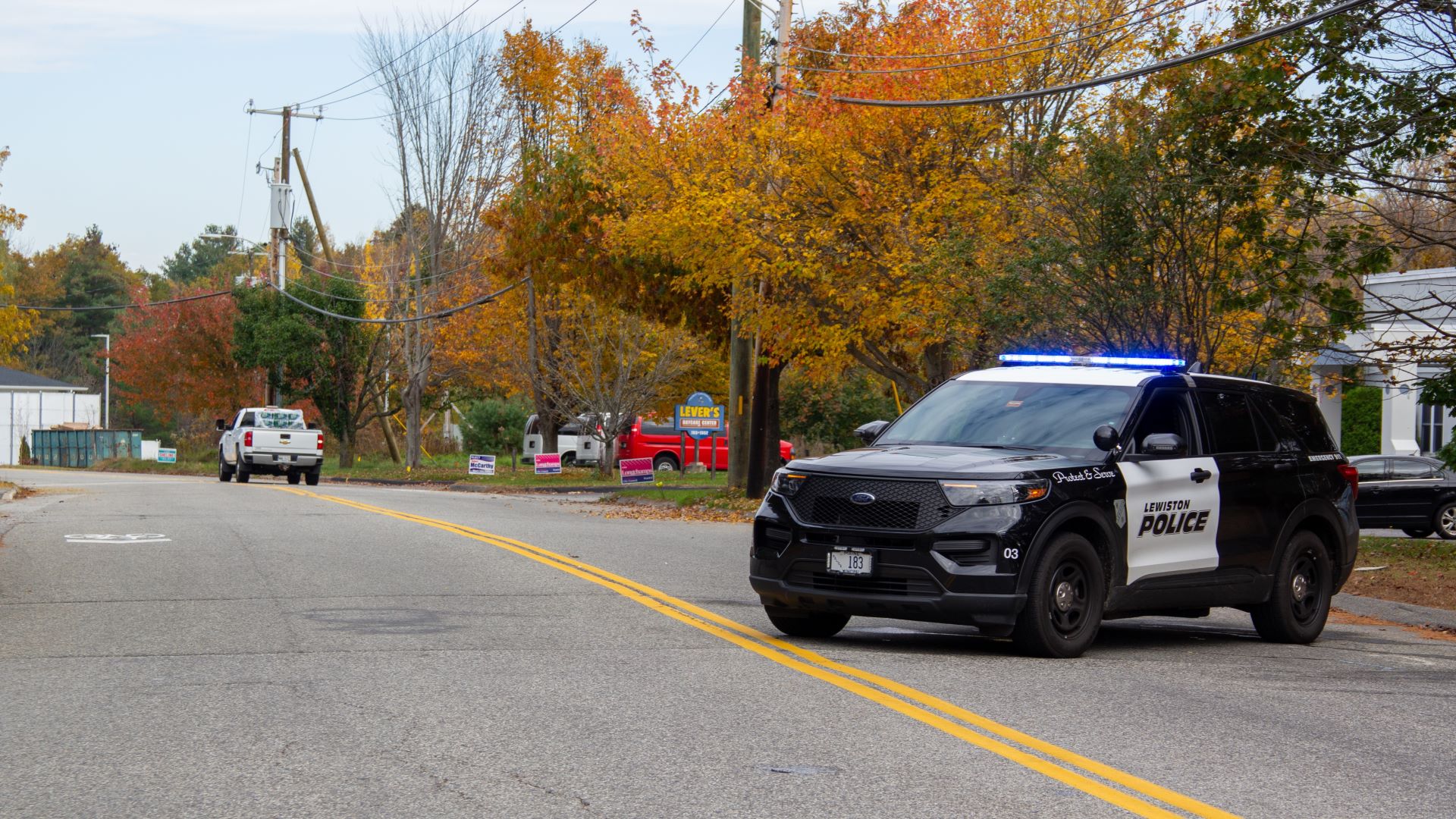In February, as the New Hampshire House of Representatives debated a bill to prohibit guns in school zones, a gun owner opposed to the bill stepped up to the dais and handed the committee members a printed table of data showing violent crime rates in New England over two decades.
“Incidence of violent crime in New Hampshire, with a one-year exception, has been among the three lowest incidences nationwide,” the man, Jay Simkin, told the committee. “We live in a very, very safe state. And if you look at the line of data for Massachusetts, it shows that the incidence … has been at least twice that of New Hampshire.”
“If gun control laws were beneficial,” he continued, “one would have thought that would be obvious in Massachusetts because, periodically, they add to the volume of their laws.”
That bill, along with several other gun reform measures introduced during the 2023 session, didn’t pass. Simkin’s testimony to the committee echoed a frequent line of argument from gun rights proponents, who often point to states like New Hampshire, Maine, and Vermont to argue that states don’t need strong gun laws to have low rates of violence.
Recent events have brought a new sense of urgency to these discussions. In the waning months of 2023, the region experienced an unsettling series of high-profile shootings: a mass shooting in Lewiston, Maine, in October that killed 18; the shooting of three Palestinian students in Burlington, Vermont, in November, which is being investigated as a hate crime; and a shooting at a psychiatric hospital in New Hampshire the same month. These events serve as stark reminders that, despite low overall rates of violent crime, no community is immune to gun violence.
A reader named George submitted a question related to this issue to our Ask The Trace series: “Generally, states, as well as nations, from the data I’ve seen, with higher gun restrictions have lower deaths from guns. Why are these few New England states an exception?”
Another reader asked, more generally: “Is it true that the states with the strictest gun laws have the lowest rates of gun violence? Gun control opponents often claim the opposite is true.”
Below, we’ll look specifically at these three northern New England states, their southern New England neighbors, and where they all fall within the national landscape of gun ownership, gun laws, and gun deaths.
What have researchers learned about gun laws and rates of violence?
One of the most consistent findings in gun violence research is that regions with more guns see more gun deaths. This assessment applies to both firearm homicide and firearm suicide and holds true among U.S. states and across international borders.
Other research has shown that states with stricter gun laws generally have lower rates of gun violence, including both firearm homicide and firearm suicide. Many of these studies found only correlational relationships, not causal ones, and research on the effects of specific gun policies is still limited. But more gun violence research is being conducted now than ever before, and the literature on specific gun policies is growing.
One of the most recent studies, one that did attempt to infer causality, found that state gun regulations — particularly background checks and waiting periods — were associated with substantial reductions in gun death.
Other research has found considerable evidence in favor of the same two policy interventions, as well as a link between some gun laws and lower rates of violent crime and suicide (in the case of child-access prevention laws) and more permissive laws and higher rates of gun violence (in the cases of concealed carry and “stand your ground” laws).
Before we dig into the data on rates of gun violence, we should assess just where the New England states fall in terms of gun laws and ownership.
In which states do Americans own the most guns?
There is no exact data on the number of guns in each state because the U.S. has no national gun registry or universal record-keeping. But researchers have developed estimates based on a combination of representative surveys and administrative data.
According to the RAND Corporation’s estimates of household gun ownership from 2007 to 2016, the latest year for which data is available, the three northern New England states — New Hampshire, Vermont, and Maine — have higher rates of gun ownership than their neighboring New England states, but do not have the highest in the country.
Montana, Wyoming, and Alaska lead the nation in gun ownership, according to RAND’s estimates. Vermont and Maine, respectively, have the 15th and 17th highest levels of gun ownership in the U.S., while New Hampshire ranks 26th.
The three southern New England states — Massachusetts, Connecticut, and Rhode Island — have among the nation’s lowest levels of household gun ownership, each falling within the bottom six states.

Which states have the weakest gun laws?
Several gun reform organizations have ranked the states based on the strength of their gun laws. For many years, a list from Brady was widely used by researchers.
While the northern New England states’ exact scoring and placement have changed over the years as gun laws shifted nationwide, they have usually fallen in the middle of the pack. From 2007 to 2010, Maine, Vermont, and New Hampshire ranked 21st, 28th, and 30th respectively in Brady’s scoring.
Today, the Giffords Law Center to Prevent Gun Violence makes an annual gun law scorecard, based on whether or not states have specific major firearm laws. In 2022, Vermont, Maine, and New Hampshire ranked 18th, 27th, and 28th, respectively.
Though northern New England has weaker gun laws than southern New England, these states’ laws are not weak across the board. Vermont has never required a permit to carry a firearm in public, but the state has universal background checks, bans high-capacity magazines, has an Extreme Risk Protection Order law, and recently approved a 72-hour waiting period before a buyer can complete a purchase and take home a gun.
Both Maine and New Hampshire — which became permitless carry states in 2015 and 2017, respectively — have child-access prevention laws on the books. Neither Vermont nor Maine has “stand your ground” laws, which allow someone to shoot in self-defense without a duty to retreat and have been associated with higher rates of gun violence.
Which states have the most gun deaths?
It’s important to note that “gun deaths” include both suicides and homicides, along with subcategories like accidental or unintentional shootings, police shootings or legal intervention, and shootings of undetermined intent. While firearm homicides often receive most of the focus, particularly in the media, suicides make up the vast majority of gun deaths in the United States.
Each of the New England states falls below the national average for overall gun deaths, according to the Centers for Disease Control and Prevention. New England, as a whole, has the lowest gun death rate of any U.S. census division.
But the northern New England states of Vermont, Maine, and New Hampshire have higher gun death rates than their southern neighbors Massachusetts, Rhode Island, and Connecticut.

The rate of gun death in Massachusetts was the lowest rate in the nation for the last four years for which full data is available, 2018 to 2021, at 3.5 gun deaths per 100,000 residents (age-adjusted). From 2010 to 2020, the rate was the same, but Hawai’i had a slightly lower rate.
The northern New England states have gun death rates ranging from two to three times that of Massachusetts.
Neither of the readers drew a distinction between homicides and suicides, but it’s important to examine. Opponents of gun laws frequently single out homicide rates, or violent crime rates, as Simkin did during his testimony before the New Hampshire House Criminal Justice and Public Safety Committee.
Some people, often gun-rights advocates, frequently argue that including suicides under the umbrella of “gun violence” is disingenuous. A previous edition of Ask The Trace explained the argument — and why some experts push back.
Homicides
Here again, each of the New England states falls below the national average, and as a whole the region has the lowest rate in the nation. Each state had firearm homicide rates at or less than half of the national average rate of 5.4 per 100,000 from 2018 through 2021.
But in this category, the northern New England states do have lower rates: New Hampshire, Maine, and Vermont had the lowest firearm homicide rates in the country, while Massachusetts, Connecticut, and Rhode Island had rates that were slightly higher but still well below the national average.
Suicides
The firearm suicide rate is where there is significant divergence among these six states.
While Massachusetts, Connecticut, and Rhode Island each have firearm suicide rates below the national average (Massachusetts again finds itself with the lowest firearm suicide rate in the country), the northern New England states have firearm suicide rates above the national average.
This is the only category in which any of the New England states perform worse than the national average.
Why might northern New England have lower gun homicide rates than expected?
States with stricter gun laws tend to have lower gun death rates. In aggregate, this is true even without adjusting for other factors that may influence rates of violence.
That can also be true even when there are debatable outliers in some categories, like northern New England and its low firearm homicide rates. And when some stricter states, like Maryland and New Mexico, have higher rates of gun violence, it doesn’t discount the overall finding.
When researchers look to evaluate the effects of gun laws and gun ownership on gun deaths, they almost always adjust for confounding factors like poverty, unemployment, education, race, and nonfirearm violence-related deaths that could also affect or influence the rate of gun death, according to public health researcher David Hemenway, the director of the Harvard Injury Control Research Center.
“Guns are a big thing, but they’re not the only thing. They don’t explain everything,” Hemenway said. “When you’re asking what’s the effect of guns, one of the things you always try to do is hold everything else constant.”
It should be noted that the basic correlation (comparing gun deaths to gun ownership or gun law strength without adjusting for other factors) is strongest among overall gun deaths and suicide, but weaker among gun homicides.
“One of the problems with homicide is that, because things like crime matter so much, unless you control for a robbery rate or something that’s related to crime like resource deprivation, you may not find anything,” Hemenway said.
“But once you control for things to make it so that you’re not comparing some very rural area to some very urban area, then the evidence comes out that more guns equals more gun deaths, more homicides.”

It would be ideal to conduct randomized control trials, in which some states would be randomly assigned to get guns while others wouldn’t, but as with most social science research, that’s not possible.
Perhaps the most compelling explanation for why each New England state has very low homicide rates is the region’s socioeconomic demographics.
Each of the states in New England — whether it be the northern gun-friendly states or the southern strict states — has poverty rates below the national average and median incomes above the national average.
The northern New England states are racially and ethnically homogenous, with proportions of white residents higher than in other states. But the southern New England states have more diverse populations, with higher proportions of Black and Hispanic residents, who bear the brunt of community gun violence. Research has consistently shown that white people are more likely to die by firearm suicide, while Black people are more likely to die by gun homicide.
Homicides are more common in urban areas, while suicides are more common in rural areas. Southern New England, including Massachusetts and Connecticut, have larger urban and suburban populations, while northern New England is largely rural and sparsely populated.
This is by no means an exhaustive list of the confounding factors that could be at play, and researchers also struggle with this challenge. In response, researchers often adjust findings to another crime, like burglary, which is less likely to be affected by gun regulations or gun ownership.
Finally, and perhaps most importantly, the U.S. has a patchwork of state gun laws with open borders between them. That means that guns from states with weak laws flow across state lines, and can drive up violence, particularly in cities, of which southern New England has more.
“I think the evidence is very strong that if you have strong gun laws, you’re better off. But it’s hard to say which gun laws really matter,” Hemenway said. “And the strength of the gun laws matters much less if you’re surrounded by places that have weaker laws.”
But some research also suggests that states with lenient gun laws may benefit from having stricter neighbors. This is particularly relevant for northern New England, which is surrounded by more-stringent states to the west (New York) and south (Connecticut, Rhode Island, and Massachusetts), and an international border with Canada to the north.







